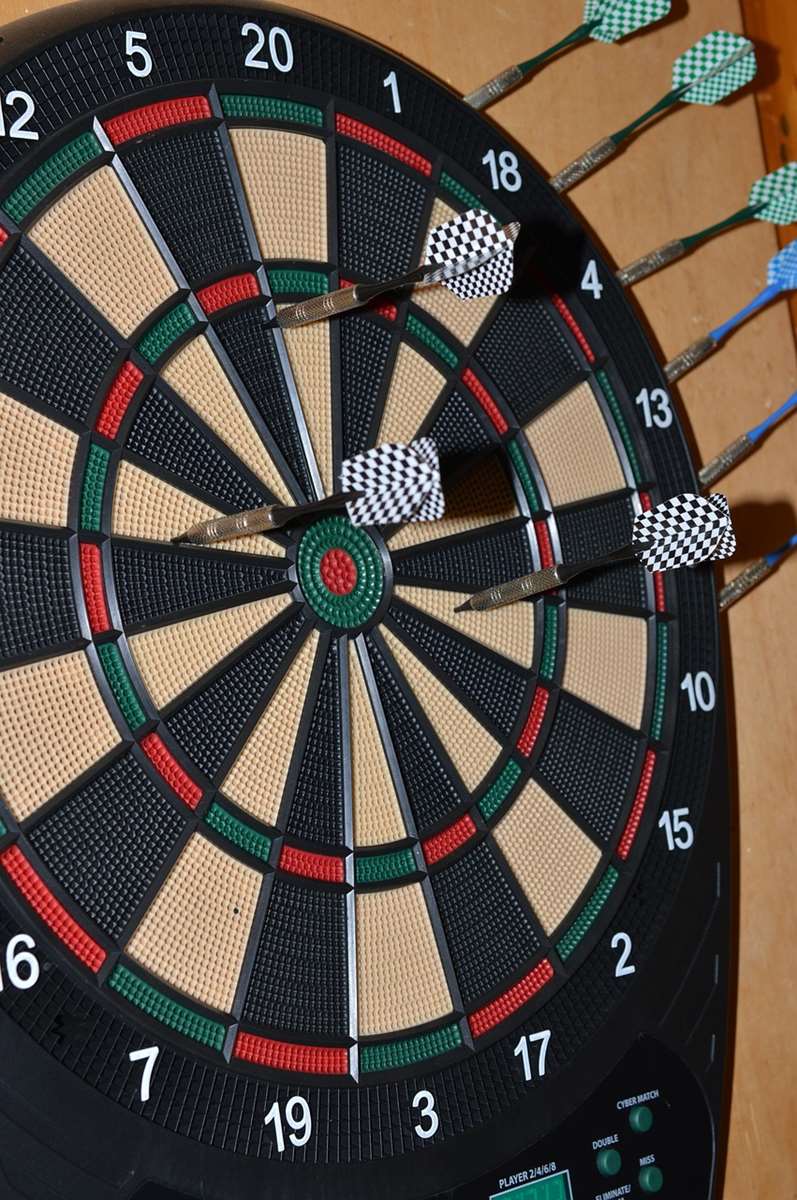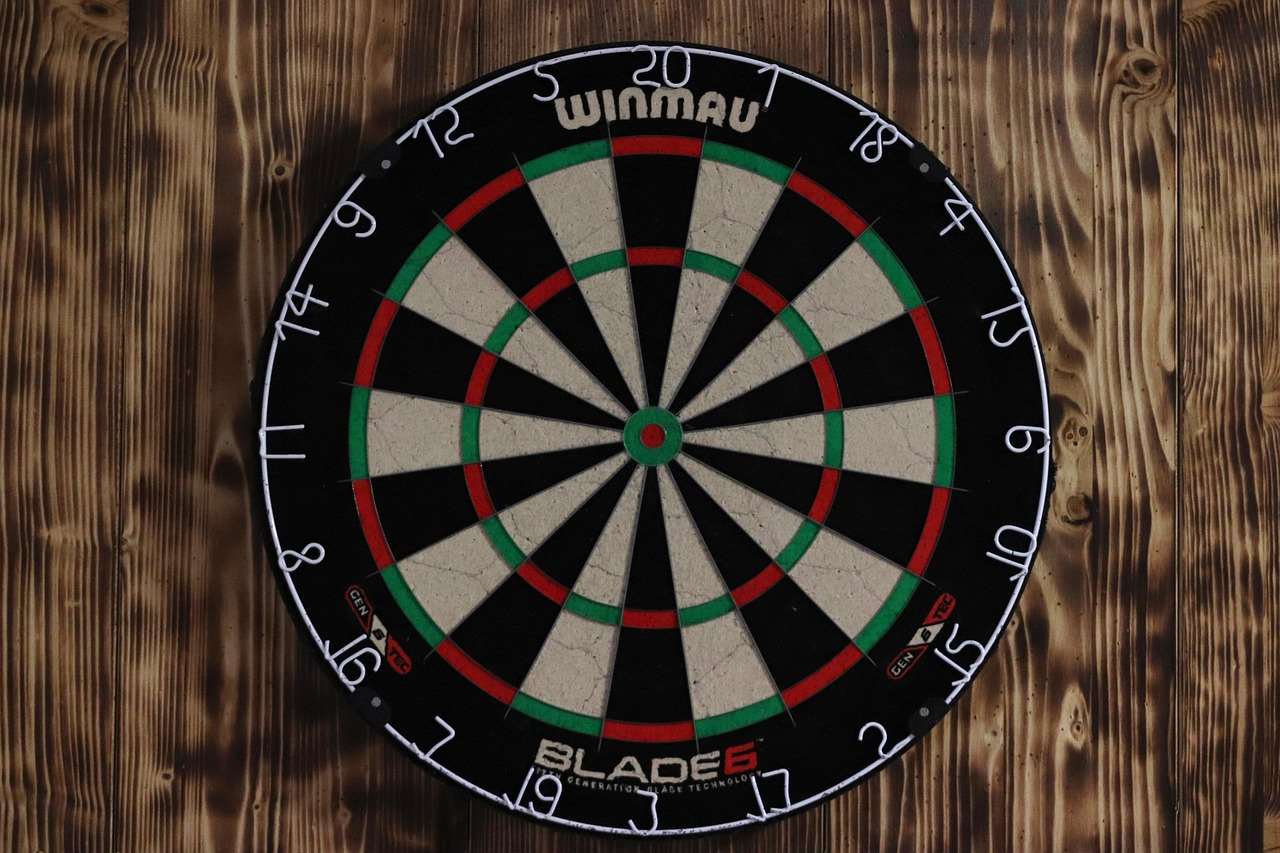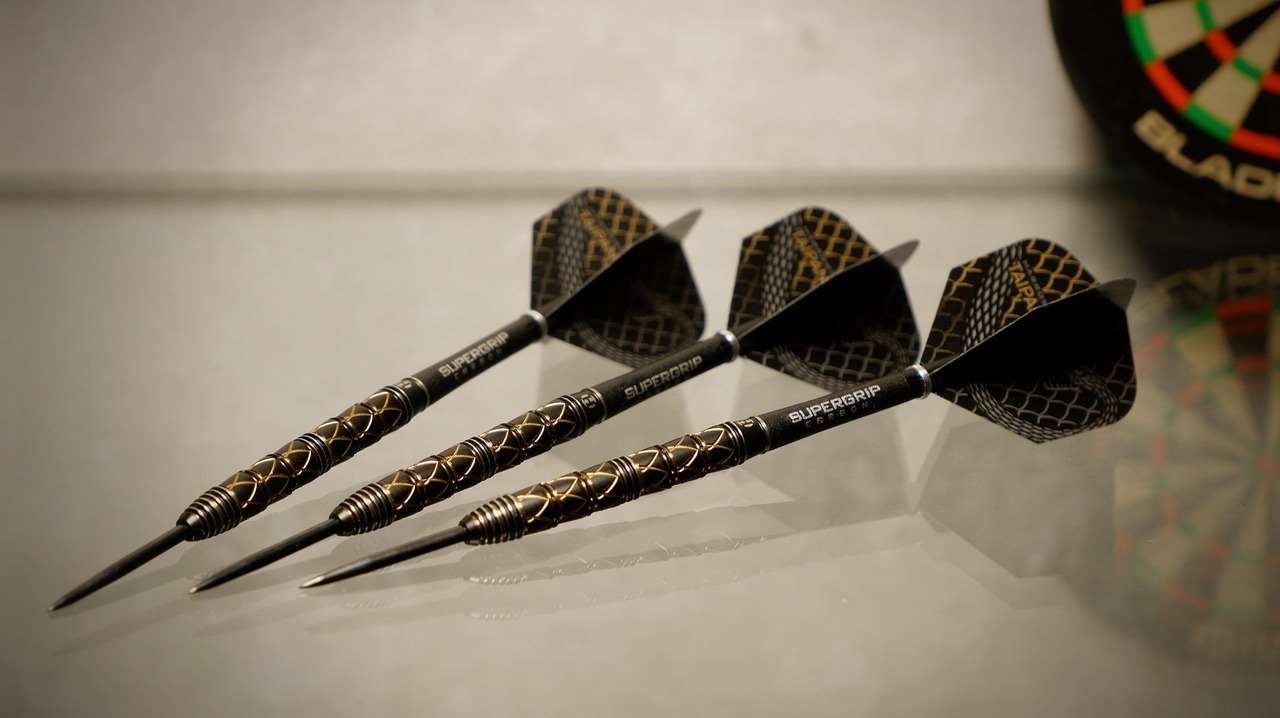Starting with soft tip darts for beginners doesn’t have to be intimidating; this guide breaks down everything you need to know, from choosing the right darts to mastering basic techniques, ensuring you enjoy the game right from the start. We’ll cover dart types, board setup, regels, and essential throwing tips.
⚠️ Still Using Pen & Paper (Of een schoolbord)?! ⚠️
Stap in de toekomst! De Dart Teller -app behandelt alle scoren, stelt kassa voor, en volgt uw statistieken automatisch. It's easier than you think!
Probeer de Smart Dart Teller -app gratis!Klaar voor een upgrade? Klik hierboven!
Understanding Soft Tip Darts For Beginners: What Makes Them Unique?
Soft tip darts are specifically designed for use with electronic dartboards. Unlike steel tip darts, which have sharp metal points, soft tip darts feature points made of plastic. This crucial difference prevents damage to the delicate electronic scoring system of the board. When considering soft tip darts for beginners, understanding this fundamental distinction is the first step. This difference also makes them slightly safer. These darts typically weigh between 16 En 20 grams, lighter than their steel-tipped counterparts.

The construction of a soft tip dart consists of four main parts: the point, the barrel, the shaft (also called the stem), and the flight. Each component plays a vital role in the dart’s overall performance, balance, and trajectory. Let’s examine each part in detail:
- Point: Made of durable plastic, the point is designed to register hits on the electronic dartboard.
- Barrel: The barrel is the main gripping area of the dart, often made of brass, nickel, or tungsten. Tungsten barrels are denser, allowing for slimmer designs and tighter groupings.
- Shaft: Connects the barrel to the flight and influences the dart’s flight path. They are typically made of nylon, plastic, or aluminum. Shaft length affects the dart’s stability.
- Flight: Provides aerodynamic stability to the dart, helping it fly straight and true. Flights come in various shapes and sizes, each affecting the dart’s trajectory differently.
Choosing Your First Set of Soft Tip Darts
Selecting the right set of soft tip darts for beginners can significantly impact your initial experience. Here are key factors to consider:
- Weight: Start with darts in the 16-18 gram range. Lighter darts are generally easier to control for beginners.
- Barrel Material: Brass barrels are an affordable option for beginners. As you improve, you might consider upgrading to nickel or tungsten for a more consistent grip and better performance.
- Grip: Experiment with different grip patterns (knurled, ringed, smooth) to find what feels most comfortable and secure in your hand.
- Shaft Length: Medium-length shafts are a good starting point. You can adjust the length later to fine-tune your dart’s flight.
- Flight Shape: Standard-shaped flights are generally recommended for beginners as they offer good stability.
Don’t hesitate to try out different dart setups if possible. Many dart shops offer test boards where you can throw various darts to see what feels best.
Budget-Friendly Options
You don’t need to break the bank to get started. Many reputable brands offer affordable soft tip dart sets that are perfectly suitable for beginners. Look for sets that include extra points and flights, as these are the components most likely to wear out with regular use. Herinneren, choosing the Kies de beste Dart -apparatuur is a key start to improving your game
Setting Up Your Electronic Dartboard
Proper dartboard setup is crucial for fair play and preventing injuries. Here’s a guide:
- Height: Hang the dartboard so that the center bullseye is 5 feet 8 inches (1.73 meters) from the floor.
- Distance: The official throwing distance (oche) for soft tip darts is 8 feet (2.44 meters) from the face of the dartboard.
- Level: Ensure the dartboard is perfectly level to avoid any bias in your throws.
- Verlichting: Adequate lighting is essential for clear visibility. Consider investing in a dartboard lighting system to eliminate shadows and improve your accuracy. This is discussed in the How To Light Your Dartboard article.
Using a dart mat can protect your floor from stray darts and provide a consistent throwing stance. It’s also a good idea to have a designated “safe zone” around the dartboard to prevent accidental collisions.

Basic Rules and Gameplay
Familiarizing yourself with the basic rules of soft tip darts is essential for enjoying the game. Here are a few common game variations:
- 301/501: Each player starts with a score of 301 of 501 and must reduce their score to zero. The winning throw must be a double (hitting a section of the board marked with a “double” ring) or the bullseye.
- Cricket: A strategic game where players must “close out” specific numbers (20, 19, 18, 17, 16, 15, and the bullseye) by hitting them three times before their opponent does.
- De klok rond: Players must hit each number on the board in sequence, starting with 1 and ending with 20.
Understanding scoring is fundamental. The board is divided into numbered sections, each worth the corresponding number of points. The outer ring doubles the score of the section, and the inner ring triples it. The bullseye is worth 50 points, and the outer bull (single bull) is worth 25 points.
Essential Throwing Techniques For Soft Tip Darts For Beginners
Developing a consistent throwing technique is crucial for improving your dart game. Here are some essential tips:
- Stance: Stand with one foot forward, perpendicular to the dartboard. Maintain a comfortable and balanced stance.
- Grip: Hold the dart firmly but not too tightly. Experiment with different grip positions to find what feels most natural.
- Aiming: Focus your eyes on the target and visualize the dart’s trajectory.
- Throwing Motion: Use a smooth, fluid motion, bringing your arm back and following through towards the target. Avoid jerky or abrupt movements.
- Release: Release the dart at the peak of your throwing motion.
Practice Makes Perfect
Consistent practice is key to improving your throwing technique and accuracy. Set aside regular practice sessions and focus on refining your stance, grip, aiming, and throwing motion. Consider using a practice routine to target specific areas of the board and track your progress. The guide about Types Optimal Dartboard Lighting highlights how to enhance your practice environment.

Common Mistakes to Avoid
Many beginners make common mistakes that hinder their progress. Here are a few to watch out for:
- Gripping the dart too tightly: This can cause tension in your arm and affect your accuracy.
- Jerky throwing motion: A smooth, fluid motion is essential for consistent throws.
- Not following through: Failing to follow through can cause the dart to veer off course.
- Inconsistent stance: Maintaining a consistent stance is crucial for developing muscle memory.
- Lack of focus: Distractions can negatively impact your concentration and accuracy.
Pay attention to these common pitfalls and actively work to correct them. Video recording your throwing technique can be a valuable tool for identifying areas for improvement.
Maintenance and Care of Your Soft Tip Darts
Goed onderhoud kan de levensduur van uw soft tip darts and ensure optimal performance. Hier zijn enkele tips:
- Replace broken points: Broken or damaged points can affect the dart’s trajectory and damage the dartboard.
- Clean your barrels: Regularly clean your barrels with a soft cloth to remove dirt and grime.
- Tighten shafts and flights: Ensure that your shafts and flights are securely attached to the barrel to prevent them from coming loose during play.
- Store your darts properly: Store your darts in a dart case to protect them from damage.
Regularly inspecting your darts for signs of wear and tear can help you identify potential problems before they impact your game. Replacing worn components promptly will maintain the optimal performance of your darts.

Advanced Techniques and Strategies
Once you’ve mastered the basics, you can start exploring more advanced techniques and strategies to elevate your game. Here are a few ideas:
- Grouping: Practice throwing multiple darts into the same area of the board to improve your grouping ability.
- Checkout Strategies: Learn common checkout combinations to efficiently reduce your score in 301/501 spellen.
- Mental Game: Develop mental focus and concentration techniques to maintain composure under pressure.
- Opponent Analysis: Observe your opponent’s throwing style and tendencies to identify weaknesses you can exploit.
Consider joining a local dart league or club to gain experience playing against other players and learn from their expertise. Participating in tournaments can provide valuable opportunities to test your skills and improve your game. You can improve dartboard shadows if you Reduce Dartboard Shadows Effectively.
Upgrading Your Equipment
As your skills improve, you may want to upgrade your equipment to enhance your performance. Here are some potential upgrades to consider:
- Tungsten Darts: Tungsten darts offer a slimmer profile and tighter groupings compared to brass darts.
- Specialized Flights: Experiment with different flight shapes and sizes to fine-tune your dart’s flight path.
- High-Quality Shafts: Aluminum or carbon fiber shafts can provide greater durability and consistency than nylon shafts.
- Dartboard Lighting: Investing in a high-quality dartboard lighting system can significantly improve visibility and reduce eye strain.
When considering upgrades, focus on components that will address your specific needs and improve your weaknesses. Don’t be afraid to experiment with different setups to find what works best for you.

Conclusie
Embarking on your soft tip darts for beginners journey should be enjoyable. By understanding the basics of dart selection, board setup, regels, and throwing techniques, you can quickly progress from novice to competent player. Remember to practice consistently, focus on refining your technique, and don’t be afraid to experiment with different equipment options. With dedication and perseverance, you’ll be hitting those bullseyes in no time! Nu, grab a set of darts and start playing!
Hoi, Ik ben Dieter, En ik heb Dartcounter gemaakt (Dartcounterapp.com). Mijn motivatie was geen darts -expert - helemaal tegenovergestelde! Toen ik voor het eerst begon te spelen, Ik hield van het spel, maar vond het moeilijk en afleidend om nauwkeurige scores te houden en statistieken te volgen.
Ik dacht dat ik niet de enige kon zijn die hiermee worstelde. Dus, Ik besloot om een oplossing te bouwen: een eenvoudig te gebruiken applicatie die iedereen, Ongeacht hun ervaringsniveau, zou kunnen gebruiken om moeiteloos te scoren.
Mijn doel voor Dartcounter was eenvoudig: Laat de app de nummers afhandelen - het scoren, de gemiddelden, de statistieken, Zelfs checkout suggesties - zodat spelers puur kunnen richten op hun worp en genieten van het spel. Het begon als een manier om het probleem van mijn eigen beginners op te lossen, En ik ben heel blij dat het is uitgegroeid tot een nuttig hulpmiddel voor de bredere darts -community.